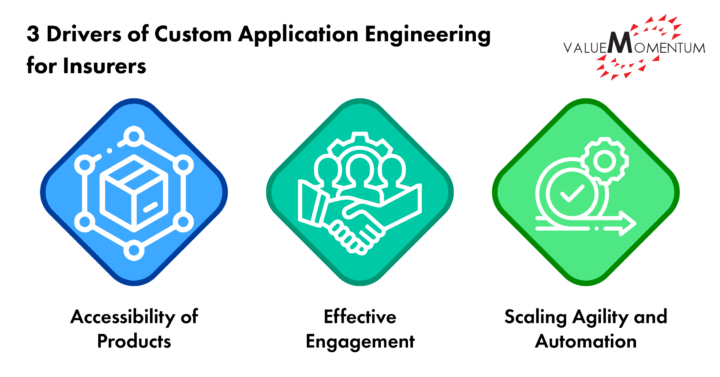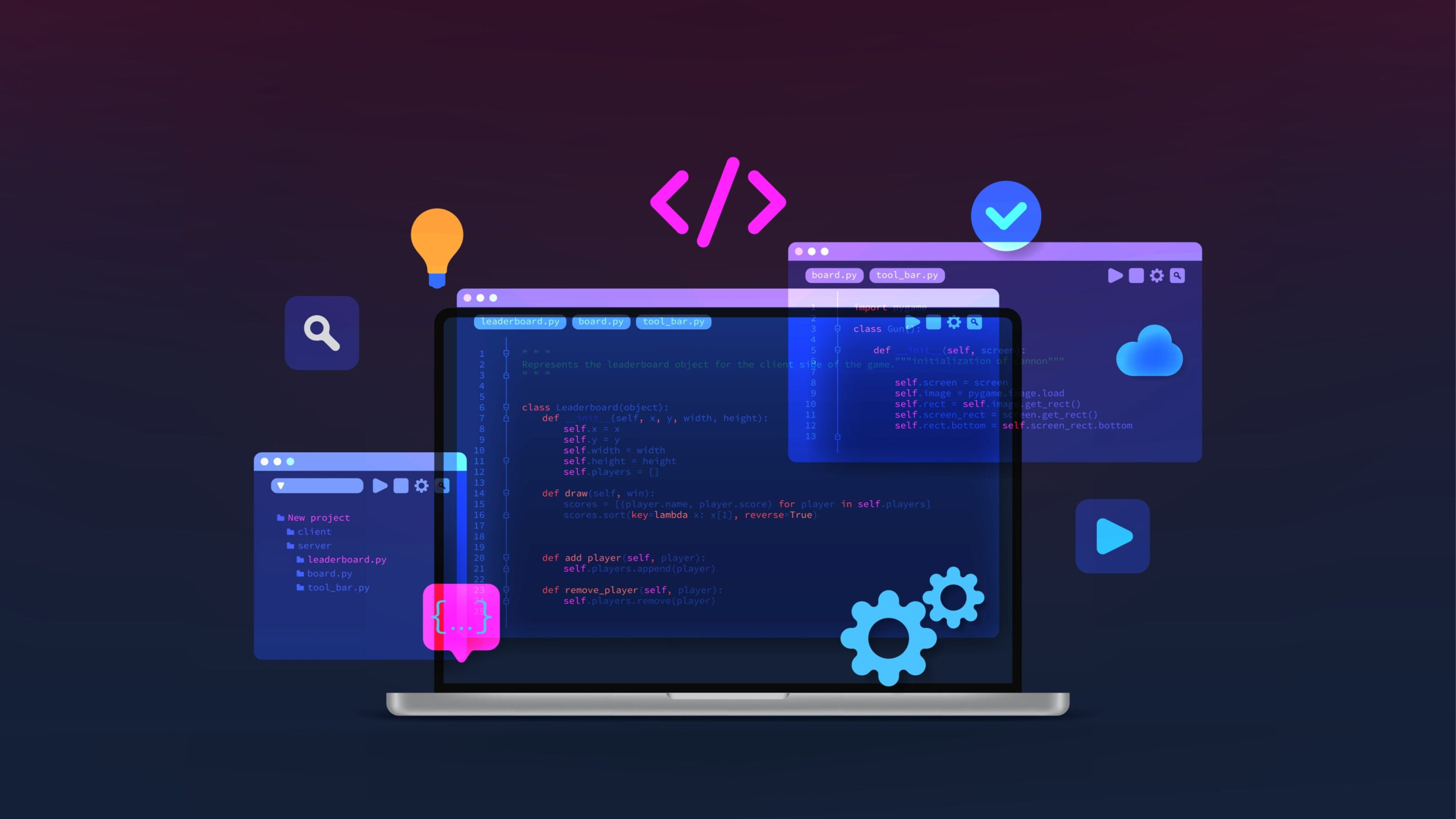With technology advances like generative artificial intelligence (AI) tools and low-code/no-code platforms encouraging the rise of citizen development, carriers are upgrading beyond just using commercial off-the-shelf solutions. Custom application engineering for insurers can provide the flexibility and scalability organizations need to differentiate themselves in a crowded marketplace.
The “buy vs. build” discussion is familiar for insurers; while the speed to market may be higher for “bought” solutions, the rise of bespoke policies and packages, among other changes in the industry, is one of the reasons insurers are more commonly investing in the “build” option by engineering customized applications and architectures.
There are a couple of main factors playing into this shift. Expanded distribution channels mean that insurers want different types of partners to have access to their platforms. With user experience playing such a large role in retaining employees and customers, improved agent and customer portal options are crucial. App engineering can play a major role in streamlining these user experiences and touchpoints with an insurer’s platforms. In addition, custom app engineering can help with overall process optimization, from submitting claims to processing payments to enabling new product rollouts.
These factors are especially pertinent in an industry rife with mergers and acquisitions (M&A) activity. When a carrier acquires a managing general agent (MGA), an insurtech startup, or a smaller carrier, merging these organizations creates not just interpersonal friction but also friction across the IT systems landscape for the acquired company. Custom app engineering can help drive better operational outcomes, improving not only the process of the merger for internal stakeholders but also the overall experience for policyholders impacted by any business deals.
Drivers of Custom Application Engineering for Insurers
Insurers can’t risk being unable to roll out new products quickly just because important information about a line of business is stuck in a siloed core system. Similarly, alienating customers by having a piecemeal, inconsistent customer experience is a mistake carriers can’t afford.

Let’s dive deeper into the three main focal areas that are driving insurers to embark upon custom app engineering initiatives.
- Accessibility of Products: Most carriers offer a wide range of products and packages to their customers, but these different lines of business may each run on their own core systems, be housed on separate servers, and be analyzed on different data platforms. On top of these factors, insurers are also utilizing product abstraction to promote risk-based insurance and innovative product models to attract millennial customer segments. Custom app engineering can help remove these silos and provide flexibility to build composable apps to meet innovative product models. It can help unlock products from their discrete core systems, expose information to create a unified data model, and deliver more agility to be able to add differentiated services, modify existing products, and launch new products more rapidly in the future.
- Effective Engagement: With so many digital capabilities and so much competition in the property/casualty market, customer experience is more critical than ever before for retaining customers, gaining new ones, and maintaining solid employee and partner relationships. In a McKinsey survey of more than 8,500 insurance customers across 40 large North American insurers, property/casualty insurance customer experience leaders performed better than their counterparts in total shareholder return by 65 percentage points in the time frame of 2017-2022. In addition to customer experience, carriers are focusing on enhancing agent, employee, and partner experience. How can insurers improve their engagement capabilities and independently manage experience concerns such as persona management, product workflows, seamless navigation to different capabilities, etc.? They can modernize and optimize their legacy applications, build intuitive web and mobile applications, ensure that they are providing cross-channel consistency, meet channel-specific concerns, and offer quick and seamless partner onboarding. All of these attributes of an effective engagement strategy can be improved by custom app engineering.
- Scaling Agility and Automation: After an insurer has successfully made information from all products and services accessible across the system and boosted engagement traffic, the organization is left with more questions to answer. Can its application infrastructure handle that level of traffic from across all of its engagement channels? Will it be able to scale the kind of traffic its applications are seeing? Would it be able to quickly add products and features to its existing channels? How about expanding into different geographic locations?
As a carrier engineers all of these applications and the ways in which they interact, one of the most important considerations is whether the applications are being engineered in a way that allows for agility and automation of processes to scale, too. The processes responsible for handling this traffic flow should be streamlined; they should be automated in a way that can tolerate the necessary traffic while also being flexible enough to change. In addition, the processes for monitoring issues, troubleshooting processes that arise, and reporting on metrics for traffic as well as issue emergence and resolution should all be incorporated into the application.
Future-ready Growth with Custom App Engineering
Insurers need to excel in each of these three areas if they want to keep customers’ interest and attract additional prospects. Legacy systems and traditional application engineering approaches might mean that an insurer has more than a dozen (if not dozens) of applications, each with a separate integration layer to the insurer’s core systems.
By customizing the application engineering approach for each insurance carrier client, systems integration partners like ValueMomentum can simplify situations like this. In the case of the insurer above with more than 14 engagement channels and upwards of 45 on-premises endpoints, ValueMomentum assisted the carrier client by containerizing each application and moving to a cloud-native, domain-driven, and Kubernetes architecture. Doing so enabled faster partner onboarding, simplified embedded insurance, accelerated and secured delivery of service, and a higher rate of system availability and performance.
This configuration-driven framework also ensured that the carrier’s team is poised to launch new apps or products quickly because the foundation is already set to be added onto. By prioritizing making each component configuration-driven, insurers are left with a standard approach to adding new applications as needed, when a smaller carrier has been acquired and its products are being added to the fold, for example, or when a new line of business is being launched that requires a separate distribution channel to be added to the stack.
Above all, insurers need to remember that an application is more than just a functional implementation. Incubators and innovators in the industry have started seeing custom applications as business enablers and are leaning toward outcome-based implementation and delivery. Along with these changes, KPI-driven development is becoming a key criterion for success. Carriers need to account for traffic concerns, the number of channels they are supporting, and the number of users on those channels. In addition, security is too big of a risk category to be overlooked. The best engineering approach for a future-ready IT environment is one that takes into account all of your considerations and the required outcomes for your systems, including your active personas, traffic, infrastructure, cost, KPIs, and architecture alignment.
To learn more about how ValueMomentum is helping clients modernize their applications for optimal future growth, check out our Digital & Cloud Solutions page, which includes app development, integration services, cloud and infrastructure services, as well as ITSM automation.
